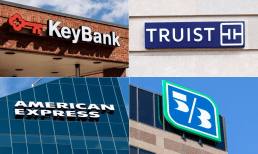This Is How Americans Send Billions of Dollars Abroad Every Year

Citizens and residents of the United States are the world’s largest remitters of funds to friends, families and employees abroad, with U.S. consumers, often migrants and foreign workers, sending $93 billion to recipients in foreign countries in 2023, the latest World Bank data shows. Increasingly, those international payments are sent not through bank wire transfers or paper checks but through digital wallets.
A forthcoming report from PYMNTS Intelligence in collaboration with TerraPay, a global payments platform, shows that more than 6 in 10 U.S. consumers who made cross-border payments within the past year used digital wallets for those transactions. The payment method is no longer considered an emerging, high-tech trend, but a mainstream option for different generations and income levels.
Digital Wallets
A digital wallet is an application on your phone, tablet, smart watch or computer that allows you make payments from that digital device. It stores your digitized credit or debit card information, other payment cards, tickets (such those for sporting events) and airline boarding passes. Common examples include Apple Pay, Google Wallet or PayPal.
The report publishing on April 21, the “Global Money Movement: U.S. Edition,” highlights how digital wallets are at the forefront of an evolution in the way money traverses borders.
Interestingly, the U.S. market shows unique demographic trends compared to other countries surveyed by PYMNTS Intelligence, including Saudi Arabia, Singapore and the United Kingdom.
Globally, younger generations often lead in digital payment adoption. But in the U.S., millennials (born between 1981 and 1996) and Generation X (born between 1965 and 1980) show the strongest adoption rates, with 68% and 70% respectively using digital wallets for cross-border payments.
Notably, both baby boomers (born in 1964 or earlier) and Generation Z (born in 1997 or later) exhibit identical adoption rates of 48%. These data points underscore both the entrenched role of digital wallets in the U.S. payments ecosystem and an opportunity for payment providers to expand their reach with both younger and older consumers.
Income Not a Driver of Adoption
Surprisingly, income plays a minor role in driving U.S. consumers to use the wallets. While higher-income individuals (those making over $100,000 annually) use the payment method more frequently (66%) than lower-income consumers (54%), the difference is relatively small. The implication: Digital wallets are not just a convenience for the affluent but a widely used tool across all financial brackets.
Knowing about a thing can lead to using that thing. More than 6 in 10, or 64%, of U.S. consumers report being very or extremely familiar with using digital wallets for cross-border payments. That level is comparable to their familiarity with traditional payment methods like debit cards (70%), credit cards (69%) and bank account transfers (63%).
But the story is much different with U.S. smaller businesses. Less than half of them use digital wallets for international transactions, indicating untapped potential in this sector.
Interestingly, a business’s size has little impact on its adoption rates, with smaller businesses (revenues up to $500,000) slightly more likely (52%) to use digital wallet compared to larger businesses (revenues between $2.5 million and $10 million) at 46%. Likewise, adoption rates are comparable between brick-and-mortar businesses (49%) and online-only merchants (42%).
Why are businesses slow to adopt the tech? One-third of U.S. merchants that don’t use digital wallets cite the payment method’s lack of status as the industry’s payment standard as a key reason. They’re also worried about the security of their financial data and money (31%) and the inability of senders or receivers to use the wallets (27%).
The actionable item: As familiarity fuels adoption with consumers, providers have an opportunity to expand their reach with both consumers and businesses by further “socializing” the payment method.
That’s where playing up the payment method’s benefits comes in. Fifty-four percent of U.S. consumers not using digital wallets cite faster transaction speed as a primary reason they would consider doing so within the next year. More than 1 in 3 believe digital wallets offer a more secure payment method. Likewise, 40% of U.S. merchants not using digital wallets indicate that faster funds transfer would encourage them to adopt.
In short, the U.S. presents a dichotomy in the adoption of digital wallets for cross-border payments. Addressing the existing barriers through clearer industry standards and enhanced security measures will be crucial in unlocking the full potential of digital wallets for U.S. businesses in the global marketplace.
Key Takeaways:
• U.S. consumers have widely adopted digital wallets for cross-border payments (63%), making them a mainstream payment method across generations and income levels.
• Smaller businesses’ adoption of digital wallets for cross-border transactions (48%) lags behind consumer adoption. Concerns about the lack of industry standard status, security and interoperability are key barriers.
• The desire for faster transaction speeds is a primary motivator for both consumers (54%) and businesses (40%) to consider using digital wallets for cross-border payments, highlighting an opportunity for growth in the industry.
Read more:
PayPal Launches X-Border Payment Collaboration With TerraPay
42% of Consumers Prefer Digital Wallets for Cross-Border Payments
Agentic AI Emerges as Fix for Cross-Border Payment Frictions



